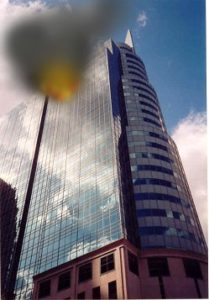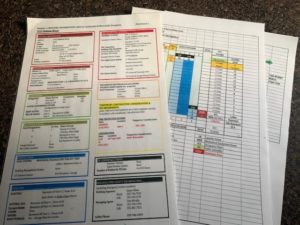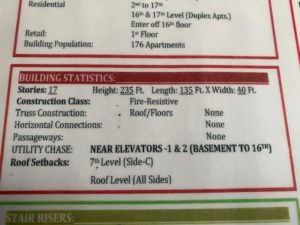Click on Menu to view additional Training Bulletins →
Supplying the Standpipe FDC: (Training Bulletin 25)
 Fire Departments across the country use a standard on recommended pump pressures when supplying water to an upper floor. The recommended pressure/numbers have been assessed over the years and continue to be an adequate reference if we truly understand the height we need to move water to. As a general rule we instruct our pump chauffeurs to supply the standpipe FDC starting at 100 psi, then add 5 psi for each story/floor above grade. The recommendation of 5 psi per floor is based on the calculation that it takes 4.34 psi to raise a column of water 10 feet. But, are the floors in your building all equal to the 10-foot reference? Also keep in mind that some building lobbies and mezzanines may be equal the height of a three-story building. So, what is the true height you need to push water to?
Fire Departments across the country use a standard on recommended pump pressures when supplying water to an upper floor. The recommended pressure/numbers have been assessed over the years and continue to be an adequate reference if we truly understand the height we need to move water to. As a general rule we instruct our pump chauffeurs to supply the standpipe FDC starting at 100 psi, then add 5 psi for each story/floor above grade. The recommendation of 5 psi per floor is based on the calculation that it takes 4.34 psi to raise a column of water 10 feet. But, are the floors in your building all equal to the 10-foot reference? Also keep in mind that some building lobbies and mezzanines may be equal the height of a three-story building. So, what is the true height you need to push water to?
 First and foremost, you need to have this size-up information before you have an incident at a building. Pre-incident information for a high-rise building in your town or city can come from several sources. One area for me was a system called the EBIC or “electronic building information cards.” This is a system utilized in New York City and in Jersey City that requires critical building information in the form of cards (or in electronic form), to be immediately available to the Incident Commander when responding and arriving a fire in a high-rise building. Each card is designed to list critical building information that the Incident Commander would need in order to efficient, effectively and safely fight a fire in a high-rise building. From such information as the number and type of staircases in the building, the number and type of elevators, occupancy/life hazard concerns, and as it relates to this training bulletin…… “the actual height and the number of floors within the building.”
First and foremost, you need to have this size-up information before you have an incident at a building. Pre-incident information for a high-rise building in your town or city can come from several sources. One area for me was a system called the EBIC or “electronic building information cards.” This is a system utilized in New York City and in Jersey City that requires critical building information in the form of cards (or in electronic form), to be immediately available to the Incident Commander when responding and arriving a fire in a high-rise building. Each card is designed to list critical building information that the Incident Commander would need in order to efficient, effectively and safely fight a fire in a high-rise building. From such information as the number and type of staircases in the building, the number and type of elevators, occupancy/life hazard concerns, and as it relates to this training bulletin…… “the actual height and the number of floors within the building.”

Why is this important? Let’s consider the following. In the information provided in the Building Statistics Section sample above, the actual height of the building is 235 feet, but number of floors in the building is 17. If we had a fire on the top floor and followed the traditional guide of 100 psi, plus 5 psi for each floor above grade, we would be required to pump into the standpipe FDC at a pressure of 180 psi. But this number would not be adequate for a top floor fire (Floor 17) in a building that is 235 feet tall. Take the same example but put the fire on floor 9. The recommended FDC pressure for a fire on the 9th. floor is going to be 140 psi. But if the floor (Floor 9) is approximately in the middle of a 235-foot-tall building, the needed pressure may be closer to 155 psi. It is important to note that these examples are not the extreme. Floor heights in commercial high-rise structures could easily be between 12- 15 feet per floor further influencing your psi calculations.
Fire departments are being challenged with the added task to identify the actual height and floor references in their pre-plans. Whether it is the true height reference and psi recommendation for each floor, certain floor intervals or sky lobbies………. the need to be better prepared to supply adequate water to an upper floor is critical for an effective outcome.
-
- For more information on the EBIC system, contact Chief Jack Murphy at jmurphy@ebisg.com
